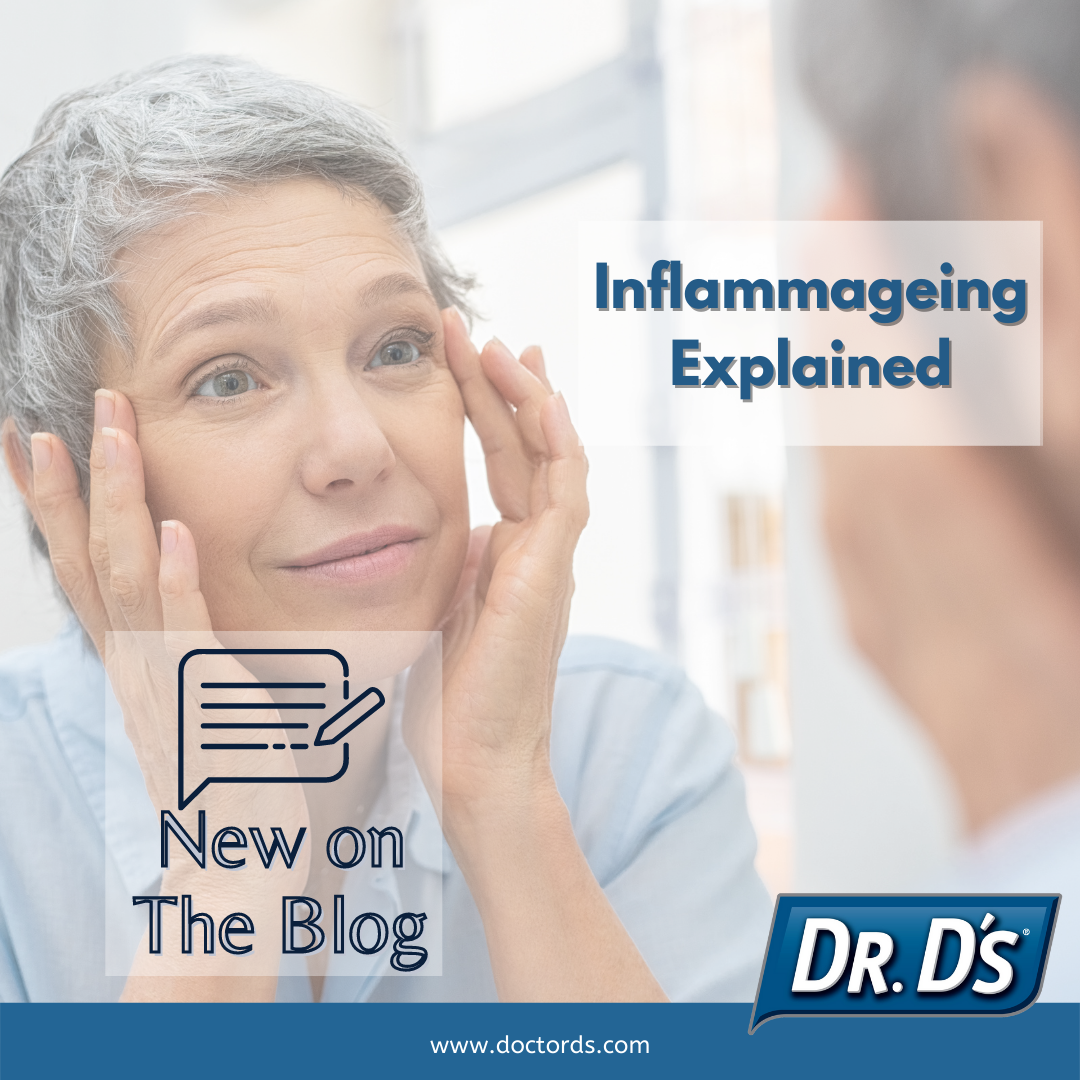
"Inflammageing" Explained
Share
We wanted to discuss something most of us struggle with or have struggled with to some degree in our lifetime: skin conditions, whether it be anything from acne to eczema to fine lines and age spots. Unless you have been keeping up with our blog posts over the last several months, you may be shocked to find out the culprit in all the aforementioned issues is actually inflammation. In fact, inflammatory skin diseases are the most common problem in dermatology. As with all inflammation, there are two types: acute (sudden or short-term) and chronic (longstanding and persistent).
Acute inflammation can result from exposure to UV rays or contact with chemical irritants or allergens. This type of inflammation is easier to manage, is usually resolves within a matter of weeks, and does not result in a lot of skin damage. Alternatively, chronic inflammation comes from a sustained immune response within the skin itself. This type of inflammation is long-lasting and can cause significant or serious skin damage. This chronic inflammation manifests into skin diseases like eczema, rosacea, seborrheic dermatitis and psoriasis.
Now, the actual process of skin inflammation is complicated and not completely understood yet, but essentially the same rules apply as with all other inflammatory cascades: there is some sort of stimulus (in this case UV rays, irritants, allergens), which triggers the skin to produce inflammatory cells like cytokines to combat the potential harm from the stimulus, which lead to further inflammatory hormones being called into the area in response. In a healthy immune response, the recruiting of further “back up”, so to speak, would be over once the threat has passed. However, as we have seen with chronic inflammation in all types of disease, the immune system continues to fire. Therefore, the end result of the initial trigger is the amplification of a large, unnecessary inflammatory response, causing damage to the skin. This cascade of inflammation is now being used to explain skin aging.
In fact, chronic, low-grade inflammation is seen as a key player in the process of aging, and has even been given a special, fancy name: “inflammageing”. In this context specifically, the theory is that UV radiation induces oxidative stress in epidermal cells, resulting in damaged cells, causing further inflammation leading to the activation of macrophages (which are like pacman of the immune system that come to eat up waste). A byproduct of these macrophages actually degrade the extracellular matrix, or simply put, they destroy the skin cell. In short- repeated exposure to UV rays overactivates this complex, leading to chronic inflammation and long-term damage to the dermis.
An American study published in 2007 suggested that curcumin- the most medicinal property of turmeric- protects the skin by combatting free radicals and reducing inflammation through a process called nuclear factor-KB inhibition. The study therefore suggests the use of curcumin in treating skin diseases. It has also been suggested in the literature that the antioxidant and anti-inflammatory properties of turmeric may help psoriasis by controlling flare ups. The National Psoriasis Foundation even states that you can use it as a supplement or by adding it to food. Scleroderma, an autoimmune disease that attacks healthy connective tissue can lead to skin scarring, amongst other things. Curcumin's positive effects on scar formation are thought to help manage the effects of scleroderma, as well as acne scarring. Skin creams containing curcumin can help fight acne as it has been shown to help regulate skin sebum production.
Turmeric is one of nature's most powerful anti-inflammatory, although in raw form it is difficult to absorb. This is why taking turmeric in supplement form with a high absorption technology is recommended. Dr. D's Ultra BioTurmeric's groundbreaking technology involves an advanced extraction process which results in an all-natural, full spectrum turmeric supplement which remains in the bloodstream for up to 24 hours and exhibits 14 times greater absorption (compared to standard curcumin)! Unleashing Turmeric’s Full Medicinal Potential!
Sources:1) DermaMedics Professional. Inflammation. 2019. https://www.dermamedics.com/inflammation_id55.html
2) Zhang, S., Duan, E. Fighting against skin aging. Cell Transplant. 2018; 27(5): 729–738.
https://www.ncbi.nlm.nih.gov/pmc/articles/PMC6047276/
3) Thangapazham, RL., Sharma, A., Maheshwari, RK. Beneficial role of curcumin in skin disease. Adv Exp Med Biol. 2007;595:343-57. https://www.ncbi.nlm.nih.gov/pubmed/17569219
4) National Psoriasis Foundation. Herbs and natural remedies. 2019. https://www.psoriasis.org/treating-psoriasis/complementary-and-alternative/herbal-remedies
5) Medical News Today. Can turmeric help my skin? https://www.medicalnewstoday.com/articles/319553.php#how-to-use-turmeric-for-the-skin
*THE CONTENT IN THESE BLOGS IS STRICTLY EDUCATIONAL AND NOT INTENDED TO BE A SUBSTITUTE FOR PROFESSIONAL MEDICAL ADVICE, DIAGNOSIS, OR TREATMENT. ALWAYS SEEK THE ADVICE OF YOUR PHYSICIAN OR OTHER QUALIFIED HEALTHCARE PROVIDER WITH ANY QUESTIONS YOU MAY HAVE REGARDING A MEDICAL CONDITION OR YOUR GENERAL HEALTH. ALWAYS THOROUGHLY READ AND FOLLOW INSTRUCTIONS ON THE LABELS OF YOUR SUPPLEMENTS AND/OR MEDICATIONS. NOTE THAT THE CONTENT IN THESE BLOGS MAY BECOME OUTDATED AS NEWER RESEARCH IS PUBLISHED.